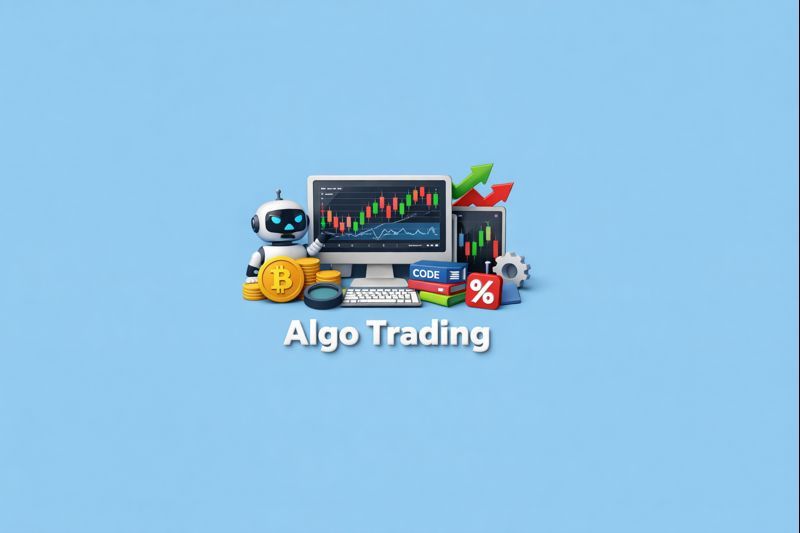What is Grey Market Premium?

- Published Date: May 30, 2024
- Updated Date: November 24, 2025
- By Team Choice
When a new Initial Public Offering (IPO) is announced, investor curiosity peaks, not just in the official stock exchanges, but also in the grey market. The grey market is an unofficial market that helps traders and investors gauge and determine demand before official listings. One of the most important indicators of the grey market is the Grey Market Premium (GMP).
This blog will explore what the grey market is, the meaning of Grey Market Premium (GMP) in IPO, how they work, the different types of GMP rates, and whether investors should rely on them.
Grey Market Premium (GMP) Meaning in IPO:
The Grey Market Premium (GMP) is the extra price at which shares of an upcoming IPO (Initial Public Offering) are traded in the grey market, before being listed on the stock exchange.
What is Grey Market?
The grey market is an informal, over-the-counter (OTC) market where IPO shares and applications are traded before they are listed officially on the stock exchange. Since this market is not governed by SEBI, it lacks significant regulation.
Deals done in this market are based on trust, with no legal protection. The primary reason investors explore this market is to anticipate the potential listing of IPO shares.
Open a FREE Demat Account in 5 Mins.
- Free AMC for First Year
- Low DP Charges (₹ 10)
- No Auto Square Off Charges
- Free Research Calls
Types of Grey Market Trading
Within the grey market, trading usually happens in two ways:
1. Trading IPO Shares: As the name suggests, this type of trading involves buying and selling IPO shares before they get listed on stock exchanges. The deal is usually struck based on the Grey Market Premium (GMP).
2. Trading IPO Applications: In this type of trading, instead of trading shares, investors sell their entire IPO applications in the grey market. The price paid for each application is known as the Kostak Rate.
Types of Grey Market Rates
Now that we have understood different types of IPO trading in the grey market, let’s take a look at the three main grey market rate types:
- Grey Market Premium: As said earlier, it refers to the price at which IPO shares are traded at a price higher (premium) or lower (discount) than the official issue price. It indicates market demand and the expected listing price. (We’ll discuss this in detail below)
- Kostak Rate: The Kostak rate is the price paid by a buyer for the right to an entire IPO application, regardless of allotment. It helps investors lock in profits without worrying about allotment.
- Subject to Sauda: This is a conditional deal where the trade is valid only if shares are allotted. The buyer agrees to pay a fixed amount per allotted lot. It is often used when IPOs are expected to be highly oversubscribed.
How to Sell IPO Shares in the Grey Market?
Trading of IPO shares in the grey market is different from trading in the official stock market. Here’s how you can trade:
Step 1: Find a Grey Market Dealer -
Trading in the grey market cannot be done directly. Investors are required to approach grey market dealers who connect buyers and sellers.
Step 2: Negotiate the Price -
The dealer quotes the GMP (Grey Market Premium) of the IPO. For example, if the IPO issue price is ₹500 and the GMP is ₹80, shares may be traded at ₹580 in the grey market.
Step 3: Agree on Terms -
If you applied for an IPO and want to sell your potential allotment, you can transfer the rights informally to the buyer.
If shares are allotted in your Demat account, the settlement is done later based on the agreed grey market deal.
Step 4: Settlement After Listing -
Once shares are credited to your Demat account post allotment, you may need to sell them as per the buyer’s instructions.
Payments are typically made in cash since this market does not go through official banking channels.
What is Grey Market Premium? Understanding GMP in India
It refers to the price at which IPO shares are traded before getting listed on the stock exchange. To explain in simple terms, every IPO has an issue price (the price fixed by the company for investors to buy shares). In the grey market, buyers and sellers trade these stocks before official listing. The difference between the grey market price and the issue price is called the Grey Market Premium (GMP).
For example, if the IPO issue price is ₹500 and in the grey market, the same share is trading at ₹600, then the GMP = ₹100. This means investors can expect the stock to be listed around ₹600 or higher on the exchange.
Important to Note:
- GMP is unofficial and based on demand-supply and market sentiment.
- It can give an idea of expected listing gains but may not always match the actual listing price.
- The grey market is unregulated in India, so trading here involves risk.
How Does the Grey Market Premium (GMP) Work?
The Grey Market Premium (GMP) is driven entirely by demand and supply, market sentiment, and investor expectations in the grey market. Here’s how the process usually works:
1. IPO Issue Price is Announced: When a company launches an IPO, it fixes an issue price (for example, ₹500 per share).
2. Grey Market Activity Begins: Even before the IPO shares are allotted to investors, dealers start trading them in the grey market. Buyers who anticipate significant listing gains are prepared to pay more.
3. Premium (GMP) is Decided: The Grey Market Premium is the difference between the grey market price and the IPO issue price.
For example:
- Issue price = ₹500
- Grey market price = ₹600
- GMP = ₹100
4. Reflection of Investor Sentiment: A positive GMP shows strong demand and optimism. A negative GMP means investors expect the stock to list below the issue price.
5. Impact on Listing Expectations: Investors use GMP to estimate the listing price. Example: If GMP is ₹100 on an issue price of ₹500, investors expect the listing price to be around ₹600.
Important Notes:
- GMP is only an informal indicator and may not match the actual listing price.
- Official factors like market conditions, subscription data, and overall sentiment on listing day also play a big role.
How to Find Grey Market Premium (GMP)?
Since the grey market is unofficial and unregulated, there is no formal exchange or platform to track the Grey Market Premium (GMP). However, investors use a few reliable sources to stay updated:
1. IPO Research Websites: Several financial portals and IPO-focused platforms publish daily GMP updates. Websites like Chittorgarh, IPOWatch, and other market trackers often provide the latest grey market price and trends.
2. Broker & Dealer Networks: Grey market trades usually happen through local dealers. Investors in touch with these intermediaries can directly inquire about the prevailing GMP rates.
3. Investor Forums & Communities: Online forums, Telegram channels, and discussion groups often share GMP updates, along with Kostak rate and subject-to-sauda rates.
4. Word of Mouth in Market Circles: Many active investors and sub-brokers keep track of GMP through informal networks, especially during high-demand IPOs.
—> Learn how to calculate Grey Market Premium.
Factors Affecting Grey Market Premium
The Grey Market Premium (GMP) changes constantly, depending on multiple factors. Let’s look at the major drivers:
1. Company Fundamentals: Strong financial performance, healthy revenues, profitability, and growth prospects create higher demand in the grey market. If the company has a proven track record or operates in a high-growth sector, its GMP is likely to be stronger.
2. IPO Subscription Levels: Oversubscription in retail, HNI (High Net-Worth Individuals), and institutional investor categories boosts confidence. A heavily subscribed IPO usually sees a higher GMP, as investors believe shares will be scarce and valuable on listing.
3. Market Sentiment: Overall stock market mood plays a huge role. A bullish market can push GMP higher, while bearish conditions can drag it down, regardless of the company’s fundamentals.
4. Sector Trends: Companies in trending sectors (like fintech, defence, renewable energy, or technology) often enjoy higher GMP because investors expect long-term growth. On the other hand, IPOs from struggling sectors may see weak or even negative GMP.
5. Liquidity and Demand: High liquidity in the market (more cash with investors) increases grey market activity. When an IPO's demand outstrips its supply, dealers are willing to pay higher premiums, which in turn drives up the GMP.
Risks of Grey Market Trading
Trading in the grey market comes with significant risks:
1. Unregulated Market: The grey market is not recognised by SEBI (Securities and Exchange Board of India). This means there are no legal protections for investors if disputes arise. All deals are informal and based on personal trust.
2. Price Manipulation: Since the grey market operates outside official exchanges, prices can be artificially inflated or suppressed by dealers. Unscrupulous players may mislead investors to create hype around an IPO.
3. Mismatch with Listing Price: The Grey Market Premium is only an indicator and may not reflect the actual listing price. For example, an IPO with a GMP of ₹100 may list much lower or higher, depending on real market conditions on the listing day.
4. Trust-Based Settlement: Grey market trades are not settled through banks or Demat accounts. Most transactions happen in cash, purely on mutual trust between investors and dealers. This increases the risk of default or fraud, especially for new investors.
How to Use GMP for Investment Decisions?
Since GMP is unofficial and speculative, it should be used carefully and only as a supporting tool. Here’s how investors can make sense of GMP:
- Treat GMP as a Sentiment Indicator
- A high GMP suggests strong demand and optimism in the market.
- A low or negative GMP signals weak demand or negative sentiment.
Use it to gauge the mood of investors, not as a guarantee of profits.
Combine GMP with Company Fundamentals:
Look beyond the hype of the grey market; a thorough analysis of the company's financials, business model, and future growth prospects is crucial. Even if GMP is high, a company with weak fundamentals may not sustain its price after listing.
Check IPO Subscription Data:
Subscription levels (Retail, HNI, QIB) offer more reliable data than GMP. A highly oversubscribed IPO usually indicates strong demand, supporting GMP expectations.
Factor in Market Conditions:
GMP can change rapidly depending on market sentiment, liquidity, and sector performance. For example, even with strong GMP, a sudden market downturn can negatively affect listing prices.
Use GMP for Short-Term vs Long-Term Goals:
Short-term investors may use GMP to estimate potential listing gains. Long-term investors should focus more on company fundamentals and industry outlook rather than GMP.
Final Thoughts
The Grey Market Premium (GMP) is an unofficial but key indicator of an IPO's demand. While it can offer a glimpse into market sentiment, it's not always dependable and carries significant risks. Investors should prioritize a company's fundamentals, its sector's outlook, and official subscription data over grey market trends when making investment decisions.
Frequently Asked Questions (FAQs)
1. What is the importance of GMP in IPO?
The Grey Market Premium (GMP) helps investors estimate listing gains. A high GMP generally signals strong investor interest and the potential for a profitable listing, while a negative GMP suggests a lack of demand. However, it should only be treated as an indicator, not a guarantee.
2. Is Grey Market a part of the IPO market?
No. The grey market is not an official part of the IPO market. The market is unofficial and lacks regulation, serving as a venue for trading IPO shares and applications before they are listed.
3. Is it legal to trade in the grey market?
Trading in the IPO grey market is legal, but it operates as an unofficial and unregulated activity. It is not overseen by regulators like SEBI and happens outside of official exchanges like the NSE or BSE.
4. What is the difference between GMP and the Kostak rate?
- GMP (Grey Market Premium): The extra amount that investors are ready to pay for shares in the grey market, above their official IPO issue price.
- Kostak Rate: The price paid for an entire IPO application, regardless of whether shares are allotted or not.
5. What is the difference between GMP and Listing Price?
- GMP: An unofficial premium that reflects expected listing gains based on grey market demand.Listing Price: This is the price at which the IPO shares open for trading on the stock exchange on the listing day.
Recommended for you

Share Market Prediction For Tomorrow

Market Prediction Today (19th December 2025)

Difference Between Equity and Derivatives

A Guide to Algo Trading: Strategies, Risks, and the SEBI Rules
Read this blog to know what is algo trading in stock market, it's benefits & why jiffy is best algorithmic trading platform in India.